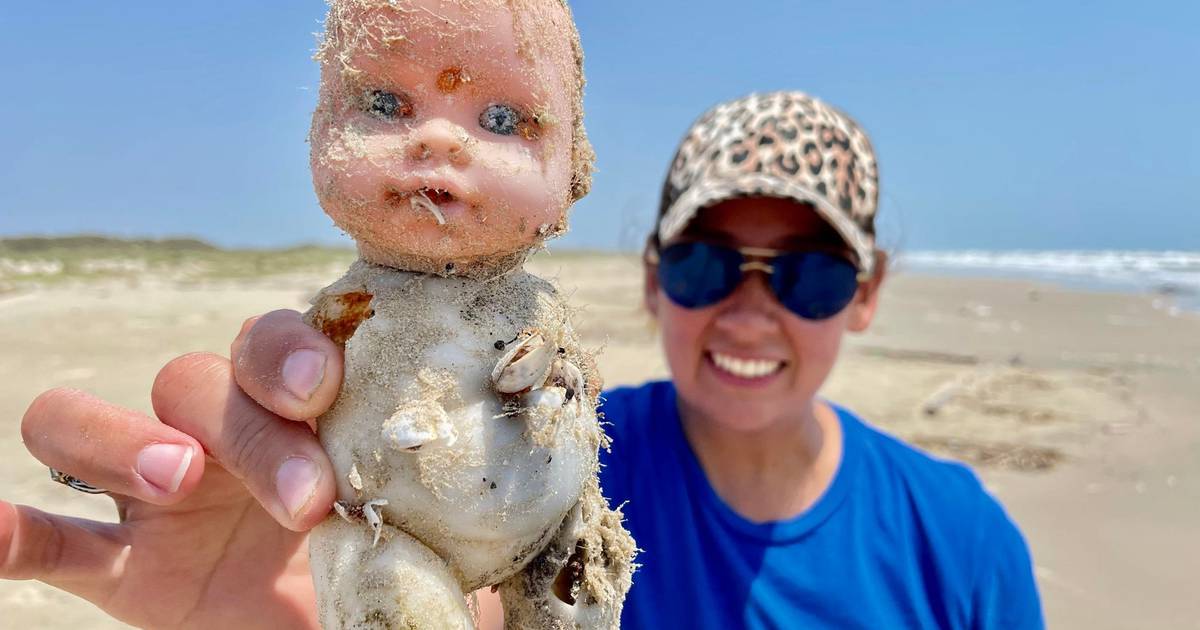
The dolls keep arriving, month after month, year after year.
Where they come from is a mystery, but the waves bring them in and lay them on the Texas sand, where Mission-Aransas Reserve researchers find them.
Advertisement
Were they lost or were they discarded? How long ago?
The ocean takes its toll, covering their beady eyes with barnacles, stealing their plastic limbs, staining their hair green with algae.
Advertisement
These dolls are creepy, Jace Tunnell says, and they won’t stop showing up.
Tunnell is the director of the Mission Aransas Reserve at the University of Texas Marine Science Institute. The Reserve, about 30 miles northeast of Corpus Christi, serves as a marine research and education program.
Situated on the Gulf Coast, Tunnell and his colleagues regularly survey a roughly 40-mile stretch of beach running from north Padre Island, up to Matagorda Island — an area the dolls seem to be drawn to.
“We’re actually doing scientific work, but the dolls are a perk,” Tunnell told McClatchy News in a phone interview.
Often, researchers are surveying the coast for sea turtles, marine mammals and endangered bird species. They comb the 40-mile span twice a week, coming across all kinds of debris in the process.
“Every day is something new,” Tunnell said. “Just when you think you’ve found everything that could possibly wash up on shore, something else comes up.”
Much of it is junk, some of it is interesting. The dolls occupy a category of their own, and Tunnell tries to document each of the eerie castaways on social media when they’re found.
“The creepiest are the ones that have lost all their hair,” Tunnell said, though each of the 30 dolls collected since he began keeping count have been disturbing in their own way.
Advertisement
“The first one we had found was a sex doll, the head of it. I posted a picture of it and I didn’t realize that’s what it was,” he said. “We got a lot of followers on the page after that.”
Someone purchased that doll head for $35, and Mission-Aransas gave the money to a sea turtle rescue program.
A surprising number of people want the dolls, offering to take them or buy them, Tunnell said.
“What are they doing with those things?” he wonders.
Those who keep up with Tunnell’s weekly debris updates seem to like the dolls. Most aren’t eager to buy one or take one home, but they follow along, seemingly fascinated and unnerved by the lost and forgotten toys.
“Always creeps me out…at least this one has a body,” a commenter said about a recent discovery, posted April 22.
Advertisement
“She has pretty eyes for a change!” wrote another.
The baby doll is missing both arms and something appears to have chewed on its left leg.
“This one looks happy to be found! …. not like some of the others!” a comment read.
Post after post, people keep wondering the same thing: Why are so many dolls washing up in this specific place? Is this coastline cursed? Probably not, but it is a bit unlucky.
Through a two-year study conducted by the UT Marine Science Institute — of which Mission-Aransas is a part — researchers learned that the Texas Coastal Bend region is a junk magnet.
“Texas coastal bend beaches get 10 times the amount of trash … than any other beach in the Gulf of Mexico,” Tunnell said, compared to what researchers in Florida and Mississippi found after conducting identical projects.
Advertisement
This is due in large part to a “loop current” reaching from the Yucatan Peninsula to Florida. This current creates eddies that push debris toward the Texas Gulf, and the Coastal Bend in particular.
“There’s a lot of nightmares out there” in the debris, Tunnell said, more Barbies and Cabbage Patch Kids and so on. Odds are good they’ll keep making their way to Texas.
Tunnell doesn’t keep any of the eerie toys, he said, just tosses them in a bucket to be sold at a yearly fundraising auction.
“They could definitely be haunted,” he said.
